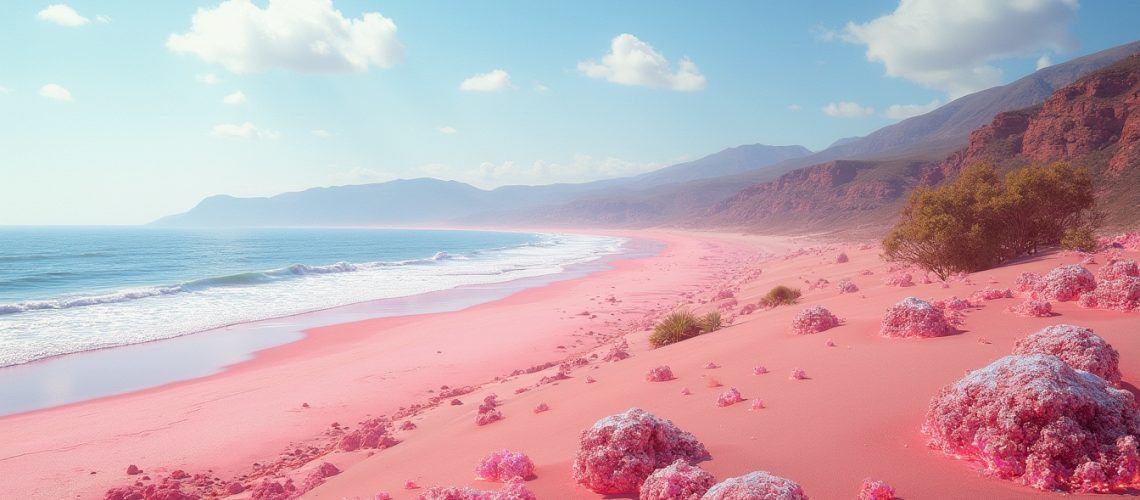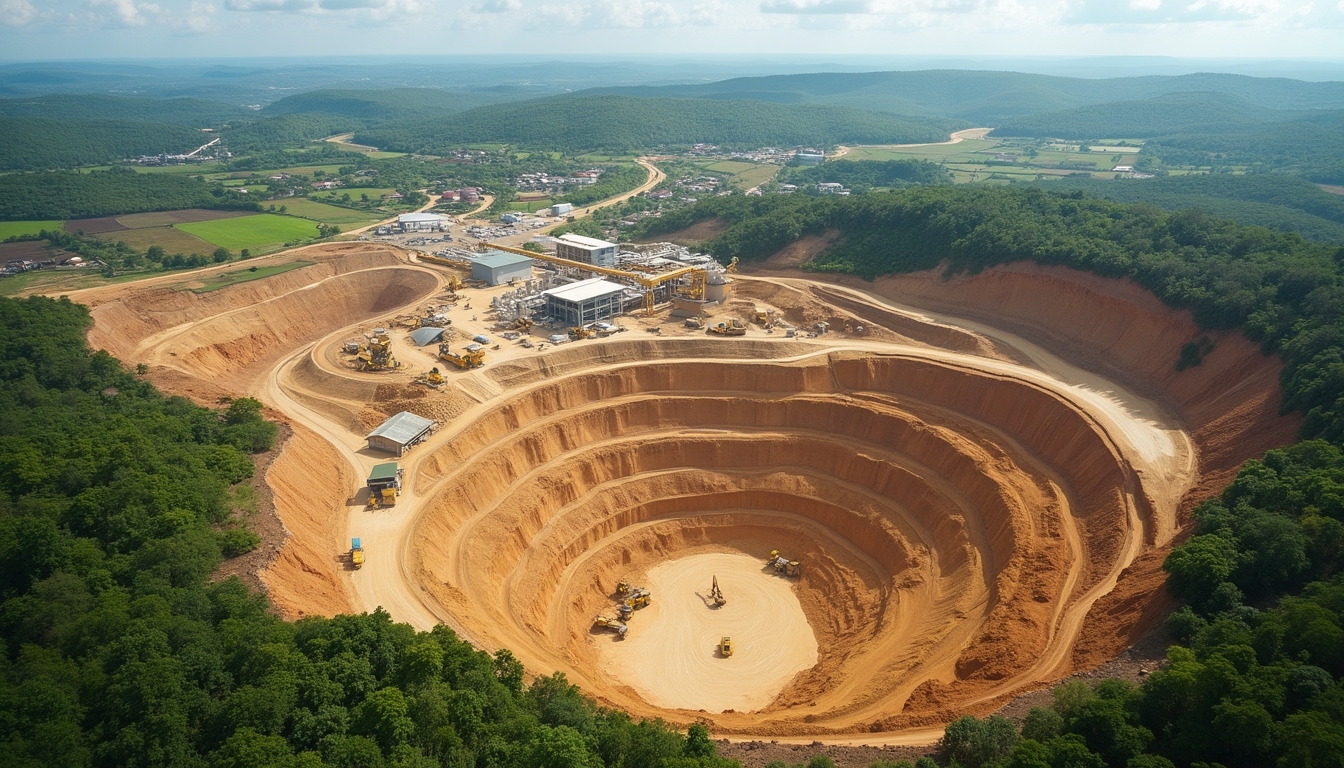What Makes South Australia's Sands Pink?
The soft, pale pink sands that stretch along certain South Australian beaches are more than just a picturesque curiosity. These delicate grains tell a geological story spanning hundreds of millions of years, with roots deep in Antarctica's ancient mountain ranges. The journey of these sands encompasses intense tectonic activities, monumental glacial movements, and intricate mineral formations, all of which contribute to their unique hue.
The Mineral Behind the Hue
The distinctive pink hue comes primarily from garnet, an iron-rich mineral formed under extreme geological conditions. Geochemical analyses have conclusively linked these sands to high-grade metamorphic sources, revealing a complex journey from mountain formation to coastal deposition.
Detailed petrological studies confirm that garnet's unique mineralogical composition creates the characteristic pink coloration. The mineral's iron-rich structure absorbs and reflects light in a way that produces the remarkable rose-tinted appearance that captivates beach visitors and geologists alike.
How Are Antarctica's Ancient Mountain Ranges Connected?
The story begins during the Ediacaran period, approximately 590 million years ago, when intense tectonic activity shaped East Antarctica's geological landscape. Regional compression events created metamorphic rocks rich in garnet-bearing materials, forming the foundation of an ancient mountain range.
As one geological expert noted, "Evidence suggests a regional compression event formed these garnet-rich metamorphic rocks," highlighting the complex processes that contributed to the region's geological evolution. These mountain formations would play a crucial role in creating the sedimentary record now found in South Australian beaches.
The Role of Tectonic Movements
Understanding how plate tectonics influence mineral deposits formation worldwide is essential to grasp the movement of these garnet grains. The shifting of Earth's plates not only created the mountains where garnet formed but also set the stage for their eventual relocation. The alignment of the Antarctic and Australian landmasses during the supercontinent Gondwana facilitated this remarkable geological exchange.
Major Geological Events Shaping the Formations
Two significant orogenic (mountain-forming) events dramatically influenced the region's geological history:
- The Ediacaran Orogeny (circa 650–600 million years ago), characterised by high-grade metamorphism.
- The Ross Orogeny (approximately 520–480 million years ago), driven by subduction and creating extensive mountain ranges.
These events were instrumental in forming large-scale garnet deposits that would eventually travel thousands of kilometres. The intense pressures and temperatures during these periods led to the creation of garnet-rich metamorphic rocks, essential for the pink sands we see today.
Rock Deformation and Metamorphism
The rock deformation during these orogenic events played a significant role in the metamorphic processes that formed garnet. Understanding rock deformation: Earth's dynamic crust helps explain how minerals are transformed under extreme conditions, contributing to the unique geological features observed in both Antarctica and South Australia.
Glacial Transportation of Garnet
During the Permo-Carboniferous ice age, approximately 300 million years ago, Gondwana drifted over the South Pole, creating massive glacial systems. These ice sheets became powerful transportation mechanisms, eroding and carrying garnet-rich materials across vast distances.
Geological evidence suggests a northwestward ice flow, aligning perfectly with the Antarctic origins of the garnet grains found in South Australian sands. Glacial sediment studies provide compelling evidence of this extraordinary geological journey:
- Erosional Patterns: Glaciers carved garnet-rich rocks from Antarctic mountains.
- Transportation Processes: Ice flows moved sediments over thousands of kilometres.
- Deposition Zones: Melting glaciers deposited garnet sands along Australian coastlines.
Garnet's Significance in Geological History
Garnet-bearing metamorphic rocks formed under high-pressure conditions serve as remarkable geological time capsules. By dating garnet and zircon grains, scientists can reconstruct tectonic timelines stretching back over 650 million years.
The minerals preserve intricate details about pressure-temperature conditions, offering researchers unprecedented insights into Earth's ancient geological processes. This information is crucial for understanding the geology of ore deposits from Earth's core to economic mineral concentrations.
Economic Implications
While the pink sands themselves are not economically exploited, studying garnet formation contributes to broader insights into valuable porphyry and IOCG deposits: formation, extraction, and economic impact. These insights aid in mineral exploration and extraction strategies, benefiting industries reliant on these resources.
Geochemical Analysis Revelations
Correlation between detrital zircon and garnet ages in modern beach sands provides direct evidence of Antarctic tectonic events. Advanced scientific instrumentation, such as mass spectrometry, enables precise age determination and mineral provenance tracking.
Key Findings from Geochemical Analyses:
- Age Dating: Aligns garnet grains with known Antarctic geological events.
- Elemental Composition: Matches garnet in sands to specific source rocks.
- Provenance Studies: Traces the journey of minerals from formation to deposition.
Modern Pink Sand Locations
Regions like the Cape Jervis Formation in the Troubridge Basin showcase these garnet-rich sediments. The gradual exhumation and deposition process spans an incredible 280 million years of geological transformation.
Visitors to beaches such as Horseshoe Bay can witness firsthand the subtle pink hues that tell a story of ancient mountains, shifting continents, and powerful glaciers. These locations are not only beautiful tourist destinations but also valuable sites for ongoing geological research.
The Broader Geological Narrative
The journey of South Australia's pink sands illustrates the profound interconnectedness of Earth's geological processes. From the formation of garnet in ancient mountain ranges to its deposition on modern coastlines, each step is a chapter in a story that spans continents and eons.
This narrative underscores the importance of interdisciplinary research, combining geology, climatology, and oceanography to understand the planet's past and predict future changes.
Frequently Asked Questions
Do all pink beaches worldwide have the same origin?
No. While South Australian pink sands derive from garnet, other pink beaches (like those in the Bahamas) may originate from different sources such as foraminifera shells, which are tiny marine organisms with pink-hued shells.
How can enthusiasts verify garnet in the sand?
Simple field tests include:
- Magnification: Examining grains under a hand lens or microscope to identify garnet's distinct crystal shape.
- Magnetism Test: Using a strong magnet, as garnets may respond due to their iron content.
- Hardness Test: Garnet is harder than common sand minerals and can scratch glass.
Conclusion: Earth's Interconnected Geological Narrative
The pink sands of South Australia represent more than a geological curiosity. They embody an epic journey from Antarctica's ancient mountains through glacial transport to modern coastlines, illustrating the profound interconnectedness of our planet's geological history.
Scientific collaboration and advancing research technologies continue to unveil the complex stories hidden within each grain of sand. This ongoing research not only enriches our understanding of Earth's past but also aids in revolutionising mineral exploration with 3D geological modelling, ensuring sustainable utilisation of geological resources.
By appreciating the intricate processes that shape our world over millions of years, we gain a deeper respect for the planet's dynamic systems and the delicate balance that sustains life.
Are You Ready to Capitalize on Geological Discoveries?
Unlock the potential of geological wonders like South Australia's pink sands with real-time alerts from Discovery Alert. Our AI-driven service provides crucial insights into significant ASX mineral discoveries, offering both novice and seasoned investors opportunities for smart trading and long-term growth. Explore Discovery Alert's 30-day free trial and simplify your investment decisions today.







